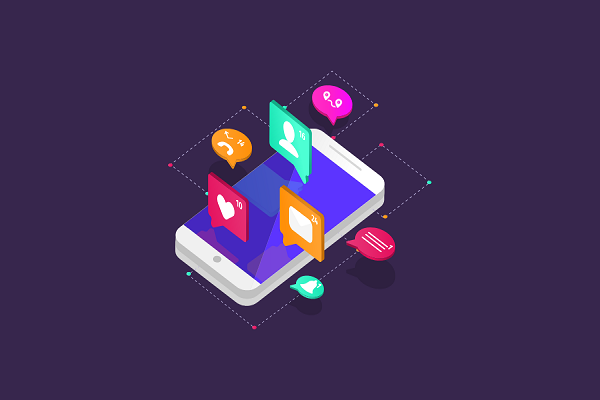Code scanning
A retail mobile app can scan any barcode or QR code using a camera lens. The app will immediately recognize the code and locate the item in its database. It will then display additional information about the product, including previews, customer impressions and current special offers. This feature allows both the retailer and customer to reduce their pre-sale consulting.
Push notifications
If you're planning to add push notifications to your application, you'll need to understand the importance of the feature. Not only will this feature encourage engagement with your app, it will also ensure you're speaking directly to your audience. But when used excessively, push notifications can lead to notification overkill. Instead of generating engagement, you could end up turning off your subscribers or having them tune out of your notifications entirely. To get the most out of your push notifications, you'll need to learn your audience's preferences.
One of the first benefits of push notifications is that they are permission-based. When sent to a user's device, they'll receive a reminder to opt in. Similarly, when a user hasn't opened an app, they will get a personalized message with a special offer. While this can help your app engagement, push notifications can also be intrusive if used incorrectly.
Another benefit of push notifications is their ability to remind your subscribers about abandoned carts, incomplete profiles, and exciting opportunities. Using push notifications for your app can increase your business in many ways. For example, push notifications can alert users to discounts or new products. Not only do they delight your customers, but they can also remind them about your latest promotions and discounts. Push notifications are perfect for beauty websites, job portals, educational portals, nutrition sites, and eCommerce stores.
Another advantage of push notifications is that they can be optimised to achieve a higher ROI. When you use your app's push notifications correctly, more people will engage with them and take action on them. The more people are engaged with your app, the more revenue it will generate. By using best practices and performing A/B tests, you can measure which messages work best and which ones don't. This will help you make adjustments in the future.
The average response rate for push notifications is 67%. According to an Airship study, the number of mobile app users who open push notifications increases between 49% and 95%. On iOS, push notifications are not compulsory; users can opt out. The average opt-out rate is two percent. However, this number increases to ninety percent on Android devices. This statistic is higher than on any other platform.
Branding elements
As the name suggests, branding elements in mobile apps are concerned with the visual image, reputation, and message of the app. Your app's branding should answer questions about the app's target audience and tone. For example, the alarm app Toonie uses a wordmark and app mascot to communicate its brand. These elements play a critical role in defining the personality of your app. This article will explore the importance of branding elements in mobile apps.
The logo has special places to shine in your mobile app. It can be featured on the app icon, splash screen, or main screen. Remember that users have already chosen to download your app, so they don't want to be reminded of it again. This is where good UI and elegant UI can play a vital role. Here are some tips to help you ensure the success of your mobile app branding strategy:
Use consistent fonts, colors, and style across all customer-facing messages. Make sure to apply your brand voice to screenshot text, app store descriptions, push notifications, emails, and other customer-facing messages. A consistent brand voice can make a huge difference in your app's experience for users. It's important to be consistent throughout your entire app's design, content, and features. You don't want to risk the user misinterpreting the app's content.
Consider using video content. It's widely accepted that video content is popular in today's world. It's no different in mobile app branding. Use 'explainer' videos to present your app's features, tell customers about the special steps involved in interactions, and demonstrate the app's problem-solving potential. These types of videos are highly effective at capturing attention and activating several perception channels at once.
Ensure that the app icon matches the brand's identity. Icons support the brand's identity and serve as interactive brand signs. Make sure to follow brand guidelines and avoid unnecessary add-ons in your app. In addition to the app icon, you should ensure the app's website and mobile apps are readable in every resolution. So if you want to make a great impression on mobile users, make sure you put in the effort to use an app icon that perfectly reflects your brand's identity.
Unobtrusive notifications
Notifications can be both distracting and effective, but it's important to know how to choose the right ones. When used effectively, they should alert users that something important has happened. An example of an unobtrusive notification is a calendar notification, which slides up to the top of the screen. However, users may not want to read a notification that's too salesy or too inappropriate.
Social sharing
One of the most common uses of social media applications is for sharing content. Content sharing is a great way to connect with your network and make everyone feel more involved. It may be as simple as posting a photo or video, or as advanced as letting others comment on the shared content. Here are 5 great features to use to make your social sharing experience better. We hope you enjoy these features!



.png)




.png)


.png)


0 Comments